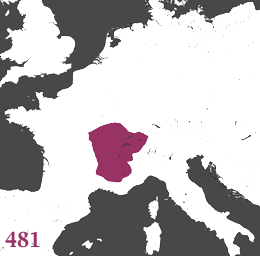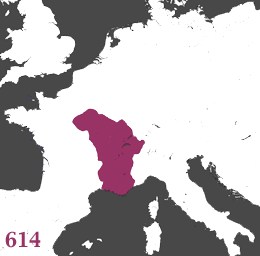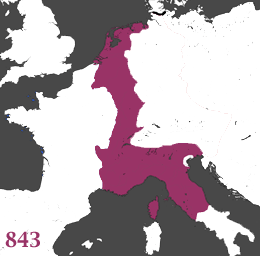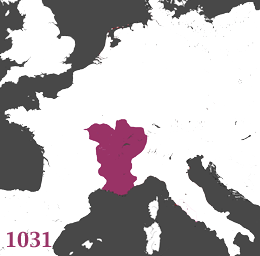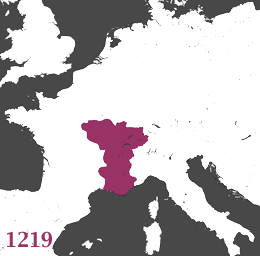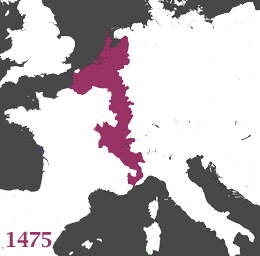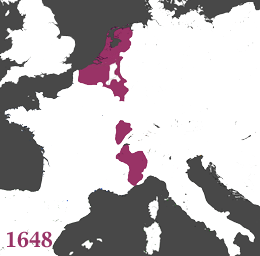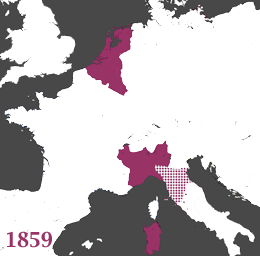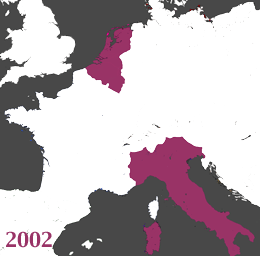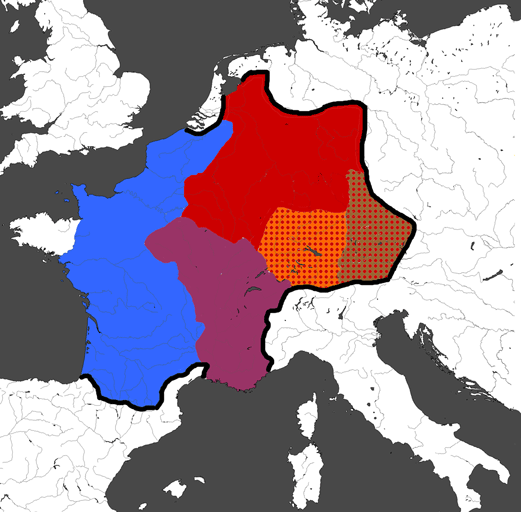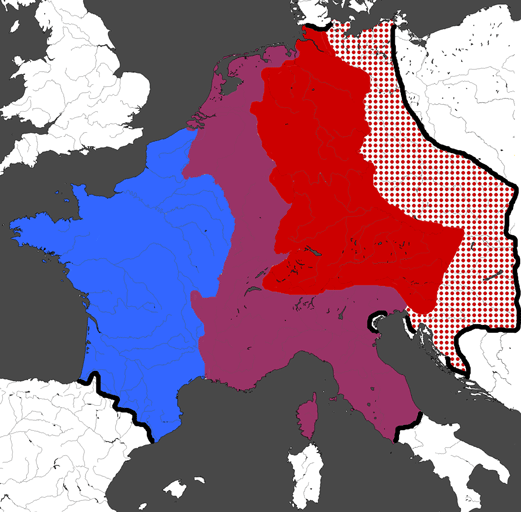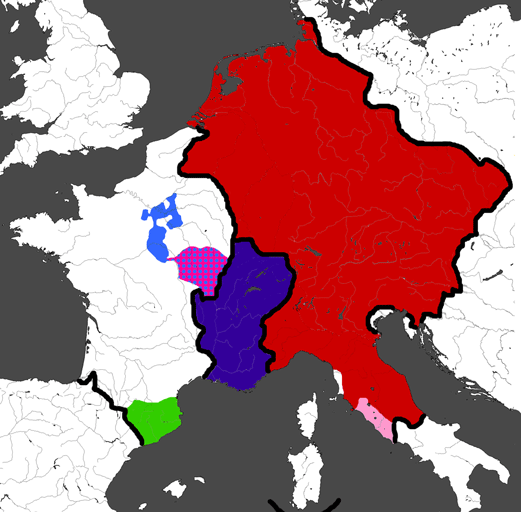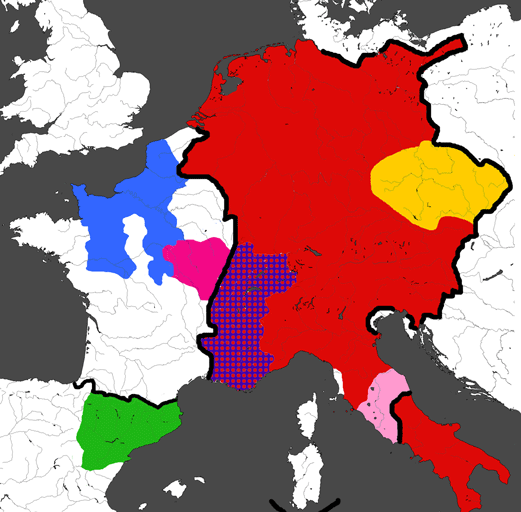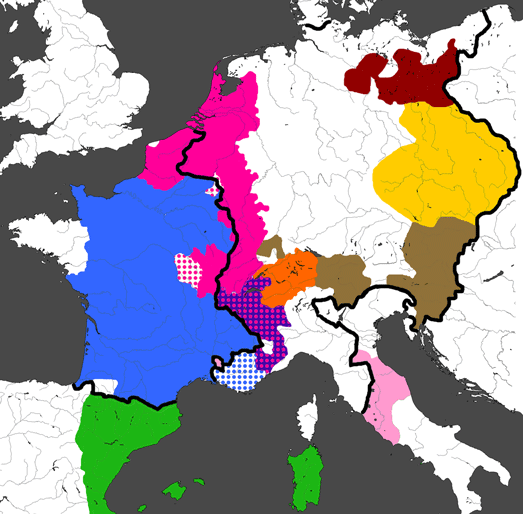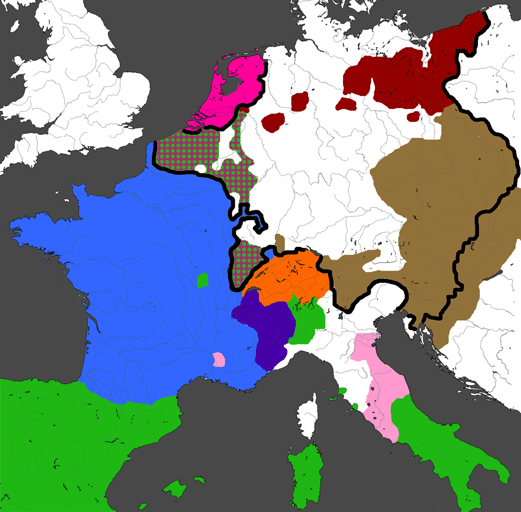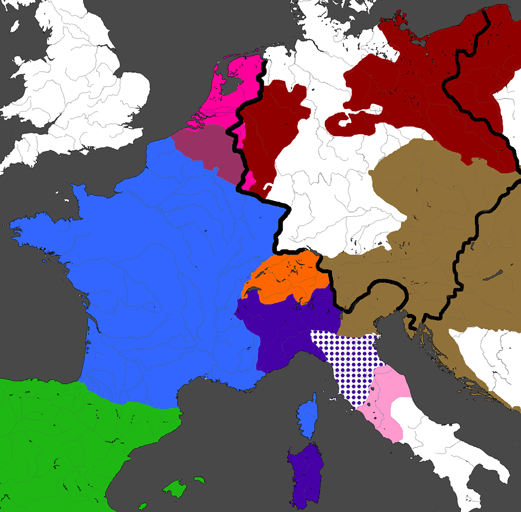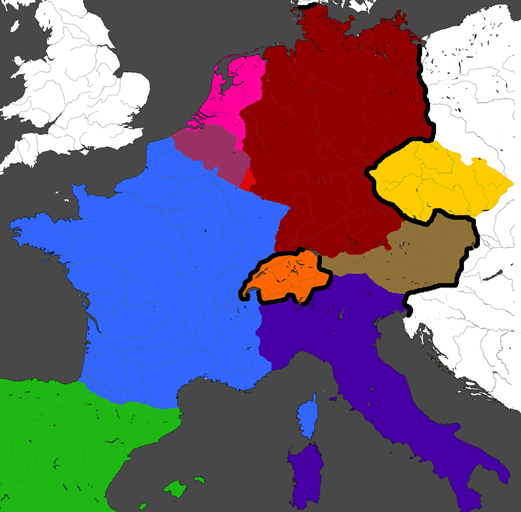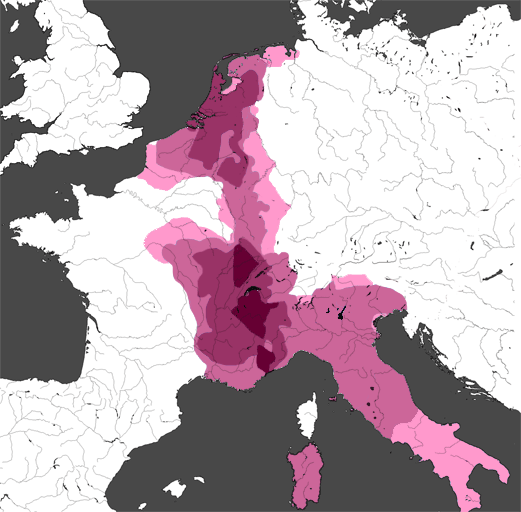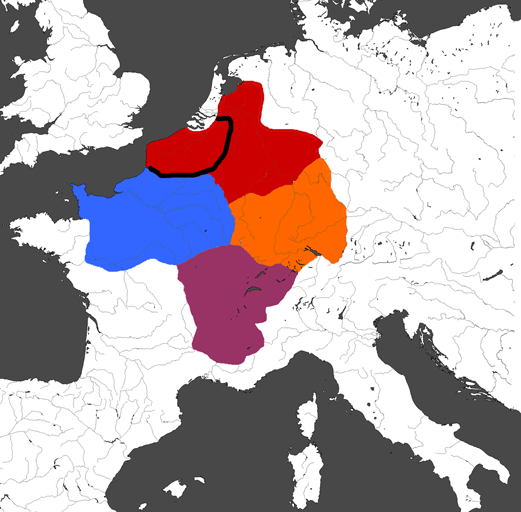 |
The fall of the Western Roman Empire is conventionally dated to 476, when the last Western Emperor acclaimed by the Senate in Rome was deposed and replaced by the Germanic King Odoacer. However, a realm ruled by a certain Siagrius, Rex Romanorum (King of the Romans) continued in northern Gaul, even though the Rhine frontier had been lost in the first decade of the 5th century. Siagrius' Kingdom would fall in 486 to the Frankish King Clovis. The accession of Clovis in 481 marks the beginning of the kingdom that would go to become the greatest of the Germanic kingdoms to succeed the Western Roman Empire. But at this time (481) Clovis was merely King of the Salian (sea-side) Franks, a territory indicated by the thick border. And at this time the territory of all the Franks, straddling the lower Rhine, was scarcely larger than that of two other Germanic Kingdoms which bordered Siagrius' realm: the Allemans straddling the upper Rhine, and the Burgundians in south-east Gaul. Moreover, bordering Siagrius' realm to the south was the much larger Kingdom of the Visigoths, encompassing Aquitaine (south-west Gaul), Septimania (southernmost Gaul), Provence (south of the Burgundian Kingdom) and almost all of Spain. It is not coloured because unlike the other polities indicated here, the Visigoths were wiped from the map by the Moslem conquest in the early 8th century, leaving neither political nor linguistic traces. Other polities in Gaul at this time --- also uncoloured because they cannot really be traced to independent nations in the present time --- are the Bretons to the west of Siagrius' kingdom, and the Frisians along the coast of the Netherlands. |
